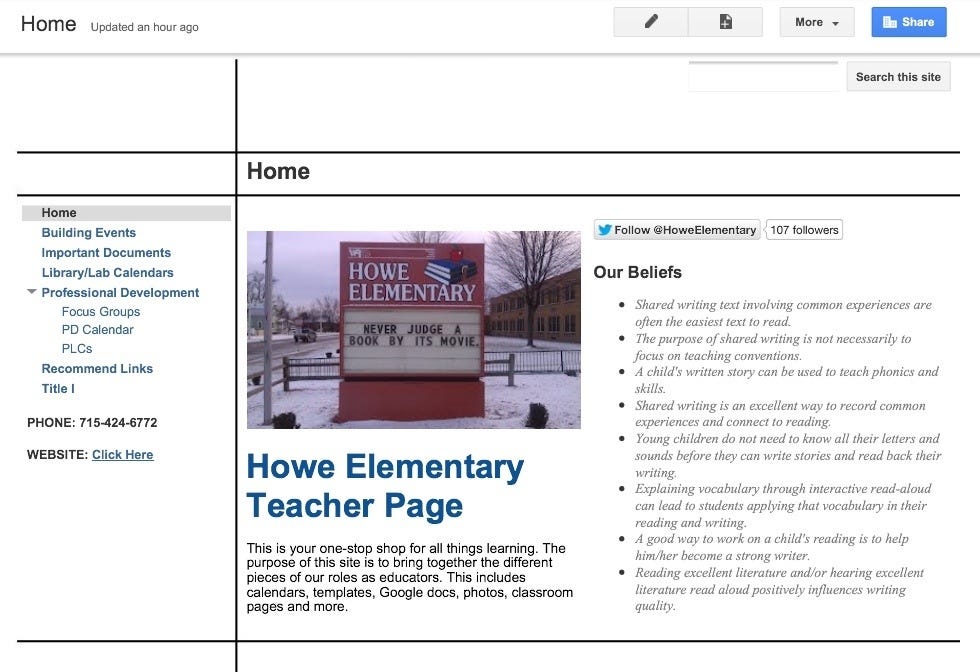Flipped PD
I recently flipped my staff professional development. This change was born out of necessity more than anything. The concept of flipping instruction has been used a lot in education, for both students and staff. My elementary school decided to try it because we didn't have enough time during the day to truly learn with one another. In the past, we spend the majority of our limited time together watching a video or reading an article with little time to discuss what we saw or read. At the same time, it was recommended at a summer leadership institute that teachers spend 20-100 hours per year reflecting on their own practices, collaborating with colleagues and discovering better ways to help students learn. Something had to give. Here is how it worked for us. Before Our Professional Development Day In late August, I asked my teachers to view online videos about teaching poetry from the Reading-Writing Connection. I also handed out the ASCD article Every Child, Every Day by Richard Allington. The expectation was they would complete these activities by our October 12 PD day. As the date drew closer, I shared a Google Doc to help guide teachers' thinking as they watched the videos. Creating a two-column document, I wrote higher level thinking questions on the left side related to the videos, such as, "What does the concept 'Whole-Part-Whole' mean to you as a teacher?" On the right side staff wrote their responses to these questions.
We also took stock of where our beliefs were as a staff. Instead of sitting down, filling out the surveys together and then tabulating them by hand, we used Google Forms and submitted our beliefs before we ever got together. During Our Professional Development Day Because much of the sitting and getting was done when it was convenient for each teacher, the majority of our time was spent talking with colleagues and sharing best practices. Not to say there wasn't structure; there was. For example, we used the Last Word Protocol instructional strategy to facilitate discussion about Allington's article. It gave myself and the other teacher facilitators an opportunity to model some effective instructional practices, an area that tends to take a backseat when curriculum and assessment directives are handed down to buildings. Each session was connected to our building goals, which are connected to our district and state initiatives. To keep things fresh, we made sure that no session lasted longer than 45 minutes. I wouldn't expect kids to sit through an hour and a half presentation, and I can't imagine my teachers would want to do the same. After Our Professional Development Day With the help of technology, our learning from today has not ended. Many of the documents, resources and learning summaries were uploaded to our faculty Google Site for later perusal. This web tool has quickly become a hub for all of our important information.

Our professional development day transitioned from these activities to self-directed, focused collaboration. I spent my afternoon working with teacher teams and addressing technology questions. When I tweeted out that I flipped my school's PD, I got multiple replies asking how it went. Thinking back to one teacher's comment ("I had so much fun today!"), I think things went very well.
